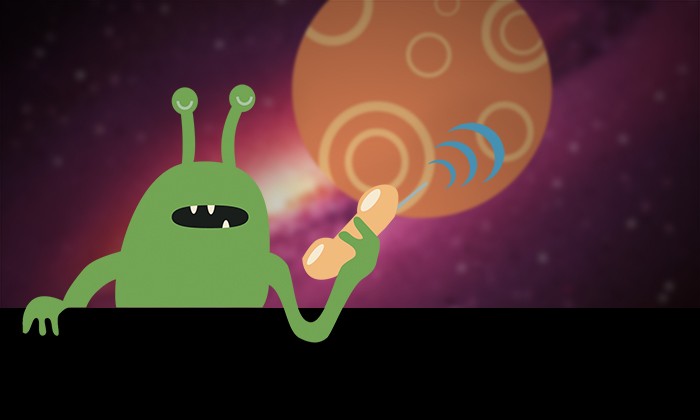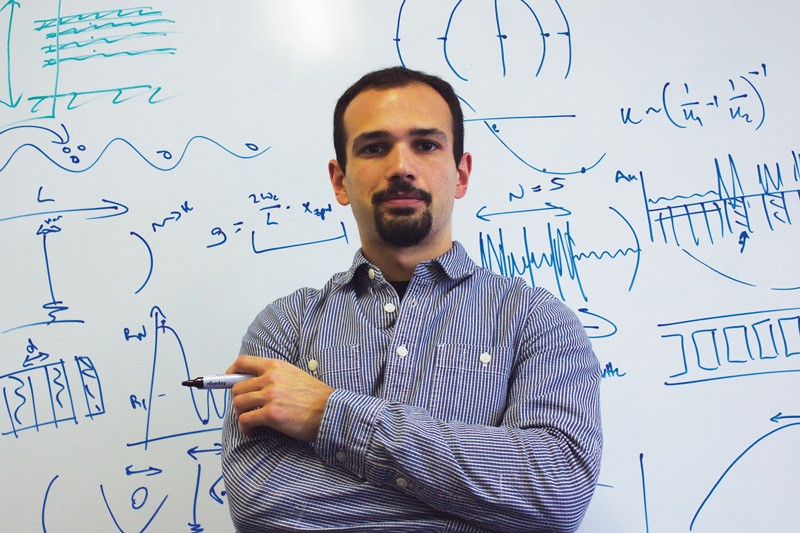Contraception, and especially the contraceptive pill, have revolutionised society in the past 60 years. Yet one of the most utilised methods has side effects that are still not addressed by science worldwide, and shining a light over Malta shows a lack of data on the population’s reproductive health. THINK investigates.
Continue readingCutting EDGE Research: the Genomes of Maltese Plants
Conservation is a 21st century hot topic. It is a top priority worldwide to ensure the lasting protection of the planet and its natural resources. But how can we even begin to conserve our natural environment if we don’t understand it? Ines Ventura investigates.
Continue readingHelping the Hatcheries: How Can We Improve the Output of Aquaculture?
With a growing worldwide population, the use of aquaculture systems to relieve the pressure on wild stocks of fish has become invaluable. But how does aquaculture ensure the survival of young fish?
Continue readingGetting the Rhythm
Music has changed society. Stephanie Mifsud met ethnomusicologist Dr Philip Ciantar to talk about music from all over the world. Studying diverse musical traditions has taught him about himself and how music can bridge cultural divides to bring us together
Classical, romantic, baroque, rock, hip hop… music continues to change throughout the years, yet we all look for that beat that gets us moving. How can we not when music is such an important part of our life?
Music is found everywhere: on television adverts, films, on the radio and at places of worship. Our society immerses us in it for hours every day. A person will listen to music that represents the way they feel. Music has the potential to influence moods, feelings, and thoughts.
“Music opens infinite thinking modes unknown to us and uncovers situations we wouldn’t otherwise experience”
Legendary rock guitarist Jimi Hendrix, told Life magazine in 1969, ‘I can explain everything better through music. You hypnotise people to where they go right back to their natural state, and when you get people at their weakest point, you can preach into their subconscious what we want to say.’
Music, like language, has a common factor: a person’s active role. People create music. No music can exist without the people who make it.
The Ethnomusicologist Dr Philip Ciantar (University of Malta) is interested in both the music itself, as a humanly organised sound, and the musicians. His research focuses on understanding how people worldwide think about music and how that affects their music. He meets and interviews countless musicians and their audiences. People’s thinking about music is shaped by who they are, their world-view, and how they use their creative imagination to create music. Take John Lennon’s song Imagine. The song has touched countless around the world. It might have changed the way people see themselves, relate to the people around them, and influenced future songs.

Music to say ‘Hello!’
Ciantar explains that ‘by listening to and exploring music from different countries we can understand other cultural and social realities. Music opens infinite thinking modes unknown to us and uncovers situations we wouldn’t otherwise experience.’ According to him, ‘music can highlight social issues or it can make a connection with different cultures when many other avenues fail’. This is the acceptance of ‘otherness’, the concept of what makes us different from each other culturally and socially. Music can be a very effective medium.
Acceptance of different cultures needs to be taught from a young age. Music can help in showing people the advantages of multiculturalism. Ciantar suggests that, at school, children can be taught instruments used in different cultures. This would help students understand and appreciate not just the instruments but also the musicians playing them. He continues, ‘you need to be open to other opinions, cultures, and traditions’ and music provides the right scenario.
Understanding music globally should lead to appreciation of diverse sounds and how they are made, communicated, and transformed into meaning. The musical process reveals humanity and here otherness surfaces as a challenge for us to deal with. It is up to us to then connect with different cultures we might consider alien.
People come together through music. The village feast is Malta’s best example of unity through music. During a feast a quiet pjazza transforms into a music concert, a fireworks festival, and a food extravaganza — uniting the whole community. These celebrations bring people together ignoring their differences.
Multiculturalism is a worldwide phenomenon. Malta is becoming multicultural and, as Ciantar comments, ‘music is an indicator of what is going on. Performances of African music at the Marsa Open Centre can be interpreted as a plea for social acceptance and cultural integration. Slavic street players in Republic Street play Bach’s violin partitas to make us connect with them culturally. Once we are connected they play a nostalgic lullaby from their homeland to make us feel the pain of distance and sympathise with them. Undoubtedly, music serves as a social text; in itself, an intriguing sonic document that links the evident with the untold or even ignored.’ This is the power of music and the concept of otherness that can shape our thoughts on multiculturalism and readiness to accept others’ views.
“Undoubtedly, music serves as a social text; in itself, an intriguing sonic document that links the evident with the untold or even ignored”

He became even more aware of multiculturalism while conducting his Ph.D. research. He went to Libya to experience different cultural backgrounds and traditions. He worked with Libyan musicians, attending their rehearsals, talked to people on Tripoli’s streets about the musical tradition of ma’lūf (a tradition valued for its Andalusian legacy), and sneaked in percussion performances with Libyan musicians. Apart from writing a book, these experiences helped Ciantar understand otherness and the challenges it implies.
Ciantar’s first experience with ethnomusicology and otherness goes back to 1991, when he was inspired by the writings of John Blacking and Bruno Nettl, and started researching Maltese folk music għana. He saw how the għanejja performed in two different contexts and their music changed accordingly. The music they sang was more elaborate in their regular bars when compared to stage music with an unknown audience.
Otherness can also be scrutinised through musical translation. Ciantar researches musical translation: how we digest and eventually accept music that might not be initially appealing to us. Recently, he composed a Maltese festa band march out of tunes that he had recorded in Libya. The process allowed him to investigate the music and himself. He had to take elements of one musical tradition and apply it to another that was culturally remote, using himself to understand the process of how a person thinks and transforms thought into music.
Ciantar is very hopeful of the musical evolution in Malta as this is being influenced by the different cultures that people encounter everyday. This will create a more varied musical scene. Ciantar can already feel the difference.
Stephanie Mifsud is part of the Department of English Master of Arts programme.
[ct_divider]
Find out more:
-
‘The Process of Musical Translation: Composing a Maltese Festa Band March from Libyan Ma’lūf Music’, Ethnomusicology, 57(1): 1-33 (2013).
-
The Ma’lūf in Contemporary Libya: An Arab Andalusian Musical Tradition. Burlington, VT: Ashgate. (2012).
-
‘From the Bar to the Stage: Socio-cultural Processes in the Maltese Spirtu Pront.’ Music and Anthropology in the Mediterranean Online (2000)
John Lennon’s Imagine
Andalusian Music
Għana Maltija—Traditional Maltese music
Stalking E.T.
There are over 100 billion galaxies in our universe. Each galaxy has billions of stars. Each star could have a planet. Planets can breathe life. Alessio Magro writes about his experience hunting for E.T. Illustrations by Sonya Hallett
In 1982, 4 years before I was born, the world fell in love with Spielberg’s E.T. the Extra-Terrestrial. Fifteen years later, the movie Contact, an adaptation of Carl Sagan’s novel, hit the big screen. Although at the time I was too young to appreciate the scientific, political, and religious themes I was captivated and it fired my thoughts. I questioned whether we are alone in this vast space. What would happen if E.T. does call? Are we even listening? If so, how? And, is it all a waste of time and precious money? Instead of deflating me, these questions inspired me to start a journey that led me to my collaboration with SETI, the Search for Extra Terrestrial Intelligence. I participated in ongoing efforts to try and find intelligent civilisations on other worlds.
The debate on whether we are alone started ages ago. It was first debated in Thales, Ancient Greece. Only recently has advanced technology allowed us to try and open up communication channels with any existing advanced extraterrestrial civilisations. If we do not try we will never answer this question.
For the past fifty years we have been scanning the skies using large radio telescopes and listening for signals which cannot be generated naturally. The main assumption is that any advanced civilisation will follow a similar technological path as we did. For example, they will stumble upon radio communication as one of the first wireless technologies.
SETI searches are usually in the radio band. Large telescopes continuously scan and monitor vast patches of the sky. Radio emissions from natural sources are generally broadband, encompassing a vast stretch of the electromagnetic spectrum — waves from visible light to microwaves and X-rays — whilst virtually all human radio communication has a very narrow bandwidth, making it easy to distinguish between natural and artificial signals. Most SETI searches therefore focus on searching for narrow band signals of extraterrestrial origin.
Narrow bands are locked down by analysing a telescope’s observing band — the frequency range it can detect. This frequency range is broken down into millions or billions of narrow frequency channels. Every channel is searched at the same time. SETI searches for sharp peaks in these small channels. This requires a large amount of computational resources, such as supercomputing clusters, specialised hardware systems, or through millions of desktop computers. The infamous SETI@home screen-saver extracted computer power from desktops signed up to the programme, which started as the millennium turned.
E.T. civilisations might also transmit signals in powerful broadband pulses. This means that SETI could search for wider signal frequencies. However, they are more difficult to tease apart from natural emissions, so they require more thorough analysis. The problem is that as broadband signals — natural or otherwise — travel through interstellar space they get dispersed, resulting in higher frequencies arriving at the telescope before lower ones, even though they both were emitted at the same time. The amount of dispersion, the dispersion gradient, depends on the distance between the transmitter and receiver. The signal can only be searched after this effect is accounted for by a process called dedispersion. To detect E.T. signs, thousands of gradients have to be processed to try out all possible distances. This process is nearly identical to that used to search for pulsars, which are very dense, rapidly rotating stars emitting a highly energetic beam at its magnetic poles. Pulsars appear like lighthouses on telescopes, with a regular pulse across the entire observation band.
For the past four years I have been developing a specialised system which can perform all this processing in real-time, meaning that any interesting signals will be detected immediately. Researchers now do not need to wait for vast computers to process the data. This reduces the amount of disk space needed to store it all. It also allows observations to be made instantaneously, hence reducing the risk of losing any non-periodic, short duration signals. To tackle the large computational requirements I used Graphics Processing Units (GPUs) — typically unleashed to work on video game graphic simulations — because a single device can perform tasks of at least 10 laptops. This system can be used to study pulsars, search for big explosions across the universe, search for gravitational waves, and for stalking E.T..
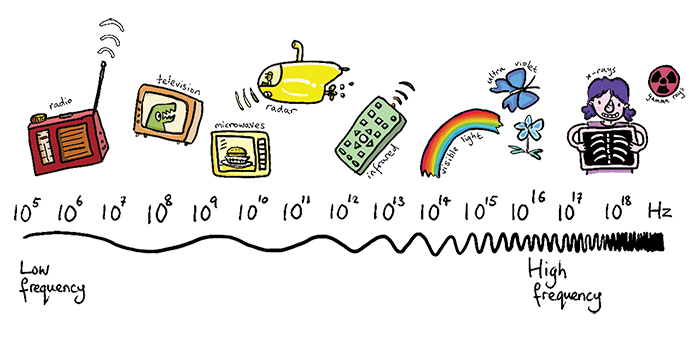
E.T. we love you
Hunting for planets orbiting other stars, known as exoplanets, has recently become a major scientific endeavour. Over 3,500 planet-candidates were found by the Kepler telescope that circles our planet, about 961 are confirmed. Finding so many planets is now leading scientists to believe that the galaxy is chock-full of them. The current estimate: 100 billion in our galaxy, with at least one planet per star. For us E.T. stalkers, this is music to our ears.
Life could be considered inevitable. However, not all planets can harbour life, or at least life as we know it. Humans need liquid water and a protective atmosphere, amongst other things. Life-supporting planets need to be approximately Earth-sized and orbit within its parent star’s habitable zone. This Goldilocks zone is not too far away from the sun, freezing the planet, or too close to it, frying it. These exoplanets are targeted by SETI searches, which perform long duration observations of exoplanets similar to Earth.
“The big question is: where do we look for E.T.? I would prefer rephrasing to: at which frequency do we listen for E.T.?”
By focusing on these planets, SETI is gambling. They are missing huge portions of the sky to focus on areas that could yield empty blanks. SETI could instead perform wide-field surveys which search large chunks of the sky for any interesting signals. Recent development in radio telescope technology allows for the instantaneous observation of the entire sky, making 24/7 SETI monitoring systems possible. Wide-field surveys lack the resolution needed to figure out where a signal would come from, so follow-up observations are required. Anyhow, a one-off signal would never be convincing.
For radio SETI searches, the big question is: where do we look for E.T.? I would prefer rephrasing to: at which frequency do we listen for E.T.? Imagine being stuck in traffic and you are searching for a good radio station without having a specific one in mind. Now imagine having trillions of channels to choose from and only one having good reception. One would probably give up, or go insane. Narrowing down the range of frequencies at which to search is one of the biggest challenges for SETI researchers.
The Universe is full of background noise from naturally occurring phenomena, much like the hiss between radio stations. Searching for artificial signals is like looking for a drop of oil in the Pacific Ocean. Fortunately, there exists a ‘window’ in the radio spectrum with a sharp noise drop, affectionately called the ‘water hole’. SETI researchers search here, reasoning that E.T. would know about this and deliberately broadcast there. Obviously, this is just guesswork and some searches use a much wider frequency range.
Two years ago we decided to perform a SETI survey. Using the Green Bank Telescope in West Virginia (USA), the world’s largest fully steerable radio dish, we scanned the same area the Kepler telescope was observing whilst searching for exoplanets. This area was partitioned into about 90 chunks, each of which was observed for some time. In these areas, we also targeted 86 star systems with Earth-sized planets. We then processed around 3,000 DVDs worth of data to try and find signs of intelligent life. We developed the system ourselves at the University of Malta, but we came out empty handed.
A camera shy E.T.
Should we give up? Is it the right investment in energy and resources? These questions have plagued SETI from the start. Till now there is no sign of E.T., but we have made some amazing discoveries while trying to find out.
Radio waves were discovered and entered into mainstream use in the late 19th century. We would be invisible to other civilisations unless they are up to 100 light years away. Light (such as radio) travels just under 9.5 trillion kilometres per year. Signals from Earth have only travelled 100 light years, broadcasts would take 75,000 years to reach the other side of our galaxy. To compound the problem, technology advances might soon make most radio signals obsolete. Taking our own example, aliens would have a very small time window to detect earthlings. The same reasoning works the other way, E.T. might be using technologies which are too advanced for us to detect. As the author Arthur C. Clarke stated, ‘any sufficiently advanced technology is indistinguishable from magic’.
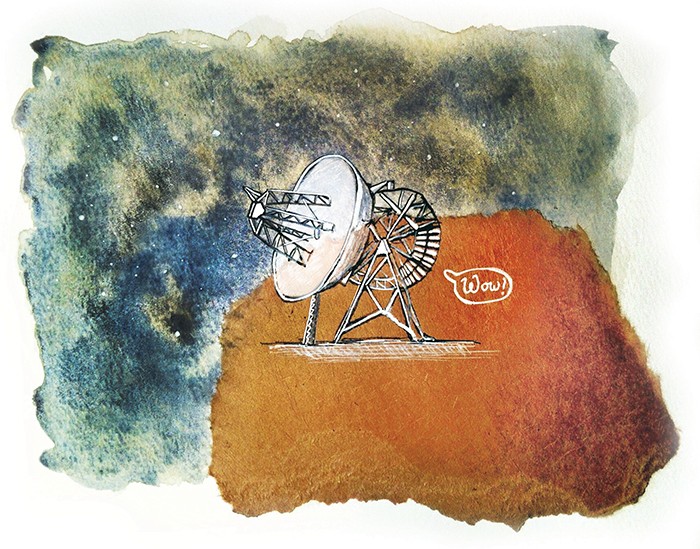
At the end of the day, it is all a probability game, and it is a tough one to play. Frank Drake and Carl Sagan both tried. They came up with a number of factors that influence the chance of two civilisations communicating. One is that we live in a very old universe, over 13 billion years old, and for communication between civilisations their time windows need to overlap. Another factor is, if we try to detect other technological signatures they might also be obsolete for advanced alien life. Add to these parts, the assumed number of planets in the Universe and the probability of an intelligent species evolving. For each factor, several estimates have been calculated. New astrophysical, planetary, and biological discoveries keep fiddling with the numbers that range from pessimistic to a universe teeming with life.
The problem with a life-bloated galaxy is that we have not found it. Aliens have not contacted us, despite what conspiracy theorists say. There is a fatalistic opinion that intelligent life is destined to destroy itself, while a simpler solution could be that we are just too damned far apart. The Universe is a massive place. Some human tribes have only been discovered in the last century, and by SETI standards they have been living next door the whole time. The Earth is a grain of sand in the cosmic ocean, and we have not even fully explored it yet.
“Signals from Earth have only travelled 100 light years, broadcasts would take 75,000 years to reach the other side of our galaxy”
Still, the lack of alien chatter is troubling. Theorists have come up with countless ideas to explain the lack of evidence for intelligent alien existence. The only way to solve the problem is to keep searching with an open mind. Future radio telescopes, such as the Square Kilometre Array (SKA), will allow us to scan the entire sky continuously. They require advanced systems to tackle the data deluge. I am part of a team working on the SKA and I will do my best to make this array possible. We will be stalking E.T. using our most advanced cameras, and hopefully we will catch him on tape.
[ct_divider]
Carl Sagan’s Cosmos
Exoplanets Galore
Through the Looking Glass
What’s your favourite game? Pacman? Doom? World of Warcraft? Most of us have spent hours immersed in video games, many still do. Prof. Gordon Calleja studies why and how we get so involved in games. Science writer Dr Sedeer El-Showk found out about Calleja’s latest book and game that are gaining worldwide fame.
The Einstein Enigma
We experience gravity everyday, but how it works is one of the biggest questions in physics. Einstein’s theory of relativity means that we don’t understand over 90% of the Universe. A team at the University of Malta is trying to put that in order.
I do not know what I may appear to the world, but to myself I seem to have been only like a boy playing on the seashore’, said the famous Isaac Newton. Humanity has progressed in its search for answers by always searching for the next smooth pebble, the next pretty shell. In Malta, a small group of students is trying to understand gravity through the observation of stars and galaxies that light up the night sky.
Gravity has kept our feet on the ground since we started walking upright. Early theories by the Greek philosopher Aristotle (384–322 bc) were interesting but far from the truth. His Universe was built in concentric spheres with Earth at the centre, followed by water, air, fire, and enclosed by the heavens — a rock fell to the Earth because it wanted to go to its original sphere. Clearly, he was wrong.
Aristotle’s concepts were challenged during the Renaissance when the Italian Galileo Galilei (1564–1642 ad) infamously dropped different weights from the tower of Pisa. Contrary to the Greek theory which stated that the heavier an object is, the faster it falls, Galileo saw the objects all fall at the same rate. Theories need to match observations, otherwise they fail — an invaluable technique used time and again by any decent scientist including the Malta group of astrophysicists led by Dr Kris Zarb Adami.
“Space is a dynamic entity ‘moving forward in time, the two being bound by light itself”
The first person to suggest a good theory for why rocks fall was Isaac Newton (1643–1727 ad). As the story goes, watching an apple fall triggered Sir Isaac Newton to come up with his theory of bodies. He said that anything with mass had a force that attracted everything towards it — the bigger the mass, the bigger the force. Since the apple is smaller than the Earth, it falls towards it, and since the Earth is smaller than the Sun, the Earth goes around the Sun. Newton’s law was successfully used to predict the motion of planets and helped discover Neptune.
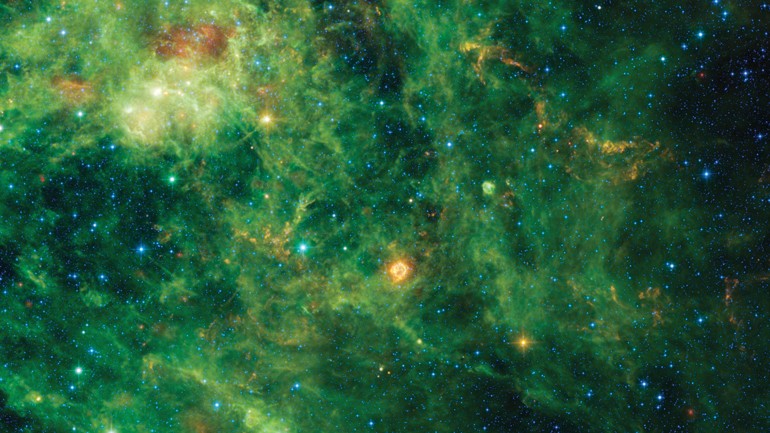
By the 20th century, holes in Newton’s ideas started to appear when scientists discovered that Mercury’s orbit differed slightly from Newtonian predictions. In 1915, along came Einstein (1879–1955 ad) who again revolutionised our understanding of gravity through the introduction of his theory of general relativity. Newton had considered time and our three-dimensional space to be independent. Einstein replaced this with the notion of spacetime, which combines space and time into one continuous surface. Space is a dynamic entity ‘moving forward’ in time, the two being bound by light itself.
Large objects like the Sun bend the fabric of spacetime (it is convenient to think of spacetime as a sheet of fabric with balls lying on top of it — bigger balls curve the fabric more). Smaller objects (such as the Earth) try to follow the shortest route around the Sun. The shortest way is curved and it is easy to see how this comes about.
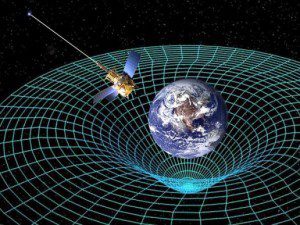
Consider the shortest route from the North Pole to the South Pole, you would naturally move down a curved longitude, which forms part of a circle round the Earth. This concept also explains why the Earth traces an orbit round the Sun. The orbit is the ‘best straight line’ that Earth can trace
in the curved spacetime surrounding the Sun. As John Archibald Wheeler neatly summarises it: ‘Spacetime tells matter how to move, matter tells spacetime how to curve’.
Einstein’s biggest blunder
Einstein’s theory of general relativity describes how gravity works. Einstein wanted his equations to represent a static Universe that did not change with time. To this end, he introduced a factor called the cosmological constant that would bring the Universe to a halt. However, this idea was short-lived. Another great (though highly egotistical) physicist called Edwin Hubble discovered that the Universe was expanding; this was confirmed in the late nineties and led to a Nobel Prize in 2011. It not only means that all matter will eventually disperse throughout the Universe and future generations will see only a blank night sky, but also poses a problem in that the reason for this expansion is completely unknown and unpredicted from Einstein’s theory. And it is not a small factor at all, since this mysterious energy makes up 68% of the energy in the Universe. Nicknamed ‘dark energy’ because it is unseen, this is the biggest problem in modern astrophysics and cosmology.
“If a star’s light is being bent by a galaxy, from Earth it will appear that the star’s light has changed, when in reality it would not have changed at all”
Scientists either have to accept that dark energy is true, or that Einstein’s model has met its limits and physics needs a new way to model gravity, at least on the largest of scales. The Malta astrophysics group is trying to verify and find new models of gravity — these so-called alternative theories of gravity. The idea is to compare observations to the different gravitational theories, including Einstein’s, and see which works best.
Our focus is split two-ways: one is the effect that celestial bodies have on each other’s orbital motion and the other is the bending of light around heavenly bodies. For example, our sun bends spacetime, causing the planets to go round it in ellipses. The sun also wobbles around a very small orbit. Observations show that the orbiting objects go round a bit longer than we would expect. The extra amount is miniscule, so measurements are taken after many orbits as this magnifies the effect. We use this as a possible test to disqualify alternative theories and have already shown how an important alternative theory of gravity cannot be true.
This is how fundamental science works. If a model does not match observations it needs to be modified to arrive at something that does give all the predictions we require. The end result must be a complete theory by itself but the different components could find their birth in a wide variety of unconnected sources.
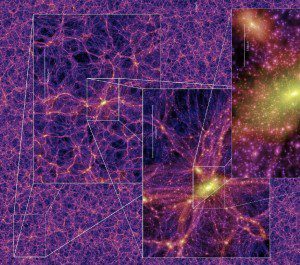
The Malta astrophysics group considered a theory called conformal Weyl gravity that is similar to general relativity in every respect except one. This theory behaves exactly like Einstein’s but imposes a further constraint — mainly that the gravitational field remains the same no matter how much it is stretched or squeezed. Simply put, as long as the mass remains the same, gravity does not change. This assumption solves many problems. It makes dark matter and dark energy unnecessary. Dark matter is needed to explain the motion of stars in galaxies. Like dark energy, it is called dark because it cannot be seen or analysed in any way. Making them irrelevant would fill a gaping hole of knowledge for astrophysics.
When the group tested the Weyl theory, it gave the same result as general relativity and a small additional term. That was not a problem, since effects of this term were so small that they could not be observed with today’s largest telescopes. The problem, as shown by the Maltese astrophysics group, is that the term grows larger with distance and contradicts observations at the largest galactic scales. This was an important nail in the coffin for the Weyl theory of gravity and Einstein’s theory still remains the best model.
Our next step is to test other alternative theories of gravity by analysing how objects orbit each other. In the same way we disproved conformal Weyl gravity, we hope that these tests will help astrophysicists to eventually come closer to a model that correctly explains the cosmos.
Bending light
Gravitational Lensing is perhaps the most sensitive test of gravity on cosmological scales. To understand how it works, consider a lit candle and a wine glass. Imagine holding the wine glass and peering at the candle through the glass’ base. The flame will be distorted and changes shape. Now picture you are with a friend who stands a couple feet by your side. The flame will appear normal to them since they are seeing it from a different perspective and the light does not pass through the glass. Two people with a different point of view see different flame shapes. The wine glass’ base distorts the flame because it acts like a lens changing the direction light travels. Obviously in the Universe there are no wine glasses between the stars and the Earth but objects with huge masses like our sun or galaxies can act like a lens and bend the direction of light by the sheer force of gravity.
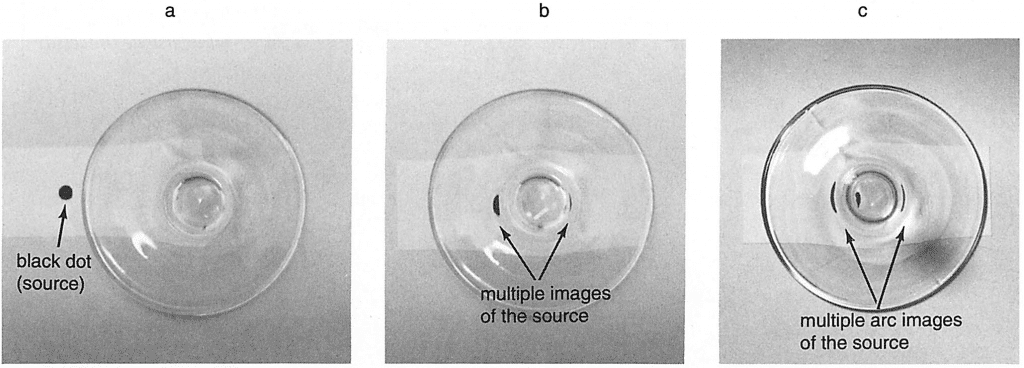
When there is no mass to affect it, light travels in straight lines, but insert a massive object and hey presto, the light deflects around it as if it were going through a curved glass lens. The area in which an object feels the gravitational pull of the Earth is called the Earth’s gravitational field. Each object in the Universe has a gravitational field and can therefore pull other objects towards it — like the Earth’s effect on the Moon, which keeps it in orbit.
Anything that enters an object’s gravitational field will feel a gravitational pull towards the center of the object. Imagine a ray of light traveling from a point to another with nothing in between. In this case the ray will travel in a straight line. Nevertheless, if the ray meets with an object along its way to the Earth, the object will pull the ray towards it as a consequence of the object’s gravity. Even though the ray of light will try to keep moving in a straight line, the gravity of the object is so strong that it bends the ray’s path. If a star’s light is being bent by a galaxy, from Earth it will appear that its light has changed, when in reality it would not have changed at all. This effect is called Gravitational Lensing and is currently one of the best tests for alternative theories of gravity, since one can measure the deflection of light and check whether it agrees with the theoretical predictions.
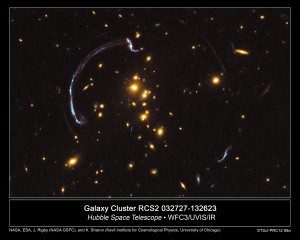
Extreme situations like the bending of light by galaxies cause problems for Einstein’s theory. When summing up the masses of the galaxies, we obtain the mass of the objects that are visible in the cluster. Comparing the predicted light deflection with the observed one, astronomers consistently find that the light is bent ‘more’ than is expected. The way to solve this issue is obvious. Introduce a completely invisible mass that increases the amount of bending until the predictions fit the observation: enter dark matter!
The idea of dark matter emerged a while ago. In 1933, Swiss astronomer Fritz Zwicky suggested it when studying how a galaxy rotation changes as one goes further away from the galaxy’s center. Zwicky observed that the speed or velocities predicted by Einstein’s theory should tear the galaxy apart. In reality, something must be keeping it whole. The idea of an invisible substance called dark matter was born.
Dark matter keeps the Universe together by opposing dark energy that pushes the Universe apart. Dark energy is related to the cosmological constant, previously discarded as Einstein’s biggest blunder, now reintroduced in astrophysicists’ equations to explain the accelerated expansion of the Universe.
The problem with dark matter is that it has never been seen. There is only indirect proof of its possible existence. Deandra Cutajar’s work focused on testing theories where no dark matter is needed. If true, this would put a small spanner into Einstein’s equations.
She tested two theories. They passed the first tests, but they have to pass many more to unseat Einstein’s general Relativity. Going back to the Swiss astronomer Zwicky, the two theories could explain why galaxies are not ripped apart by the speed with which they spin. Dark matter could be dead.
In another test, both theories failed to explain the extra gravitational effect observed in lensing. One theory failed miserably, while the other yielded less accurate results than Einstein’s general relativity. Dark matter is reborn; on the other hand, it cannot remain dark. It needs to be found and studied.
No theory of gravity has yet been found to beat Einstein’s equations. The explanation of how gravity works according to Einstein is better than Newton’s. A curved spacetime clearly explains why light is bent. Einstein’s theory of gravity still holds water and apart from the cosmological constant (his biggest blunder), he was right on most things. When his stunning prediction of how light can bend was observed, he replied, ‘I knew the theory was correct. Did you doubt it?’
What the future holds for any theory of gravity is uncertain, but what is definitely true is that the astrophysics group in Malta cannot accept the fact that we don’t understand 95% of the universe.
[ct_divider]
Gravitational lensing
More gravitational lensing
Gravitational lensing of distant star-forming galaxies (schematic) from ESO Observatory on Vimeo.





